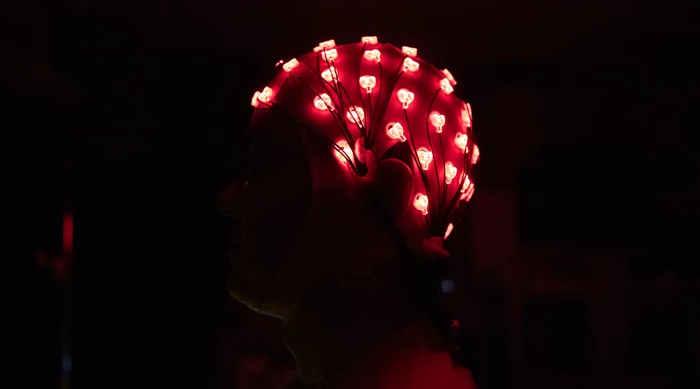The brain is a constant center of electrical activity, and when measured via electroencephalogram (EEG), certain patterns emerge, in the form of regularly oscillating brainwave activity. When you're feeling calm and relaxed, or even meditative, your brainwaves tend to oscillate at between 8-12 Hz – the alpha wave spectrum.
Each person has their own specific alpha wave frequency within this range, according to Professor Zoe Kourtzi, senior author on a new study published in the journal Cerebral Cortex – and if you can stimulate the whole brain to sync up at this frequency, you can radically accelerate learning performance.
"We simulated these fluctuations so the brain is in tune with itself – and in the best state to flourish," says Kourtzi. "Our brain’s plasticity is the ability to restructure and learn new things, continually building on previous patterns of neuronal interactions. By harnessing brainwave rhythms, it may be possible to enhance flexible learning across the lifespan, from infancy to older adulthood."

Kourtzi and a team of neuroscientists took EEG readings from 80 study participants, finding each subject's unique alpha wave frequency. They then created "optical pulses" – flashing white squares on a computer screen, tuned to precisely match the individual's alpha waves.
They showed these pulses to subjects for 1.5 seconds, hypothesizing that this would "entrain" brain activity into a more synchronized state. And then the subjects were given a quick-fire cognitive task, in which they had to pick out specific shapes among chaotic visual clutter. Each subject repeated this exercise 800 times, and different groups were given the correct frequency synchronized to the peaks of their EEG reading, the correct frequency synchronized to the troughs of their EEG reading, random waves, or waves that were deliberately tuned to be slightly too slow or too fast.
The "learning rate" at which these groups improved their performance was radically different, with subjects given the correct frequency matched up to the troughs in their EEG performing best. This group improved at least three times faster than control groups and maintained their performance gains the next day when the exercise was repeated.
"The intervention itself is very simple, just a brief flicker on a screen," says co-author Dr. Elizabeth Michael, "but when we hit the right frequency plus the right phase alignment, it seems to have a strong and lasting effect.”

"We feel as if we constantly attend to the world, but in fact our brains take rapid snapshots and then our neurons communicate with each other to string the information together," said co-author Prof Victoria Leong, from NTU and Cambridge’s Department of Paediatrics. "Our hypothesis is that by matching information delivery to the optimal phase of a brainwave, we maximize information capture because this is when our neurons are at the height of excitability."
Indeed, this kind of brainwave entrainment may have an analog in the way adults speak to children. "When adults speak to young children they adopt child-directed speech – a slow and exaggerated form of speaking," says Leong. "This study suggests that child-directed speech may be a spontaneous way of rate-matching and entraining the slower brainwaves of children to support learning."
The team says this technique is likely to work across a broad range of situations and tasks, and that it could well work with very affordable EEG headgear. “While our study used complex EEG machines, there are now simple headband systems that allow you to gauge brain frequencies quite easily,” said Kourtzi.
The research is open access in the peer-reviewed journal Cerebral Cortex.
Source: University of Cambridge





